I won’t sell, I swear to the God who is watching me
I tell you crying with rage, I will not sell.
I will not leave, even if the water reaches my neck
Even if they think they can scare me away, I will not leave.
Lola gripped the mic with a sweeping gesture to the scattered spectators, her resonant voice worthy of a mariachi trio. Her sister, Pachita, sang harmonies at her side as the tiny audience responded in kind with appreciative gritos and bravos.
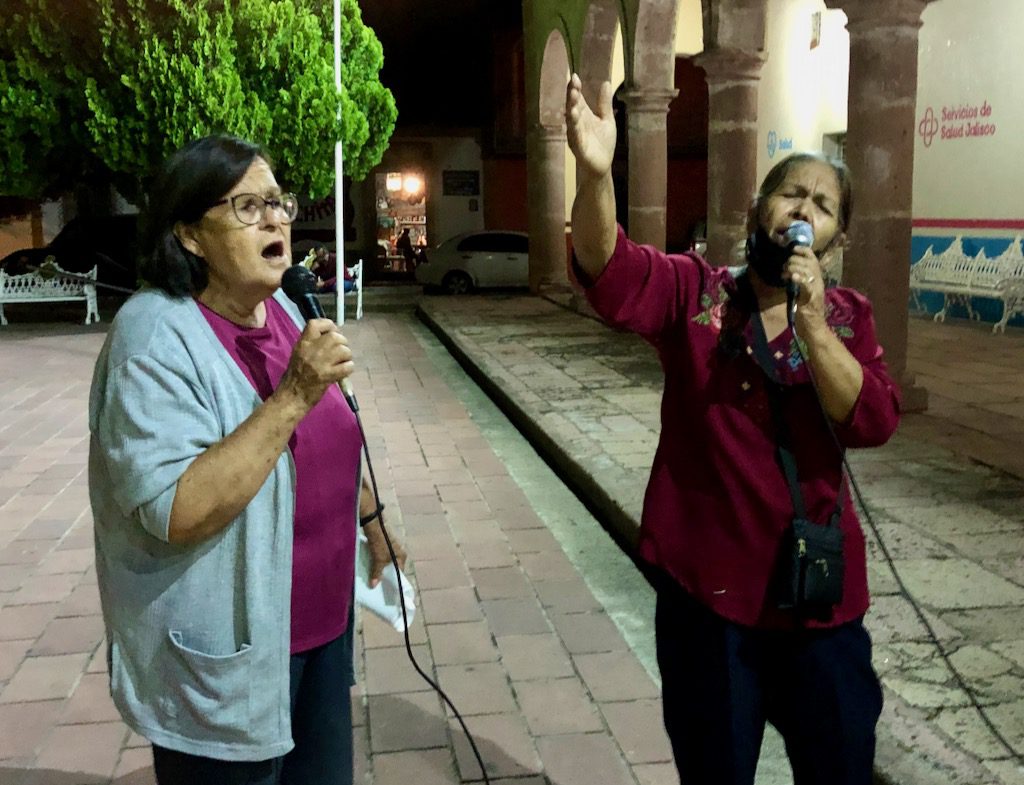
The Carbajal sisters, now in their 60s, have animated many a crowd over their 16 years of struggle for their beloved Temacapulín, but this night was different. This night they were preparing to send a powerful message to the president of Mexico, who was scheduled to pay their town a visit the next day — Saturday, Aug. 14, a day that would be marked as a turning point in the history of Temaca, as the town is affectionately known. And they, together with scores of other defenders of the historic village, would be ready.
For the full backstory, see “The Town That Refuses to Drown,” featured in Earth Island Journal.
President Andrés Manuel López Obrador proposed a compromise last week in the long-running struggle over El Zapotillo Dam, a multi-million-dollar megaproject that would flood the village, along with two others in rural Jalisco state, in order to provide water for the 5 million people of Guadalajara, as well as for the industrial city of Leon, in the neighboring state of Guanajuato. AMLO’s compromise: the dam would not be built to the previously planned 105 meters, which would flood all three towns.
Lea este artículo en español AQUI.
The aqueduct that had been planned to carry the water to Leon, currently tied up in the courts, would not be built. He would only authorize the completion of the dam at its current 80 meters, and its operation at a level that would not flood the towns, to provide water for Guadalajara and the local region only.
But the townspeople, he said, would have the last word.
This Saturday, the director of the National Water Commission, Germán Martínez Santoyo, will travel to Temaca and meet with the residents to present the compromise plan and hammer out the details. And a month from last Saturday’s visit, Obrador himself will return to hear from the people of Temaca.
“If, with all this, the people from Temacapulín say ‘We don’t want it,’ then we have to continue with the work only of protection to avoid an extraordinary situation, and that is where we will stay,” Obrador told the assembled crowd in Temaca on Saturday.
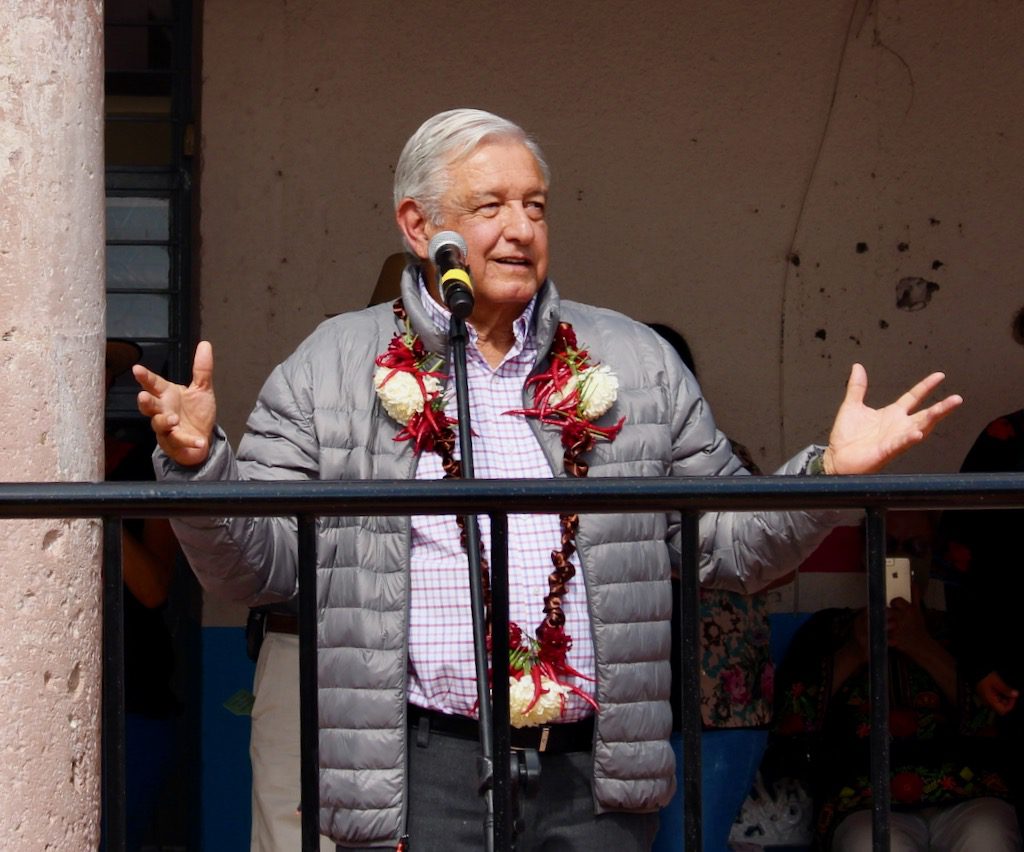
In the leadup to his visit, villagers had held a press conference in Guadalajara, their state’s capital city. Back home in Temaca, they set up a loudspeaker that broadcast over the historic plaza a continuous loop with the president’s voice, recorded over the years in different speeches, promising to save their village. They had carefully assembled a welcome carpet of brightly colored sawdust in the traditional style. They had painted and printed scores of banners, the largest of which would be carried by five children and would challenge him in big black block letters: “MR. AMLO, KEEP YOUR WORD. YOU PROMISED THAT YOU WOULD SAVE OUR VILLAGE TEMACAPULÍN.”

López Obrador had paid the picturesque village three visits in previous years, always assuring the villagers that if he were elected, he would save their town. In early August, under increasing pressure from Jalisco Gov. Enrique Alfaro to finish the nearly completed dam, the president agreed to come and meet with all the parties to try and find a solution.
“Es un honor, estar con Obrador (It’s an honor to be with Obrador),” chanted the crowd as the president received a lei made of the town’s signature red-hot chiles, and then made his way to the mic under the arched portal of the historic municipal building, shaking a lineup of outreached hands along the way. Fidel Torres, the son of a migrant worker who had spent time himself in the US as an undocumented immigrant, was the master of ceremonies.
“We expect no less than what you promised us,” he said, respectfully but firmly. “We don’t want to put you in a dilemma. We know all the elements for and against that they tell us. This is not a fifi (elite) town. We belong to this movement and we want to change Mexico. This project from its beginning, flawed in origin, has had to be endured by long years of struggle for these humble people.”
Obrador listened intently to a lineup of villagers: the children, the elders, the people representing the “absent sons and daughters” who had migrated to support their families, and the people representing Acasico and Palmarejo, the other two towns that would be flooded by the dam.
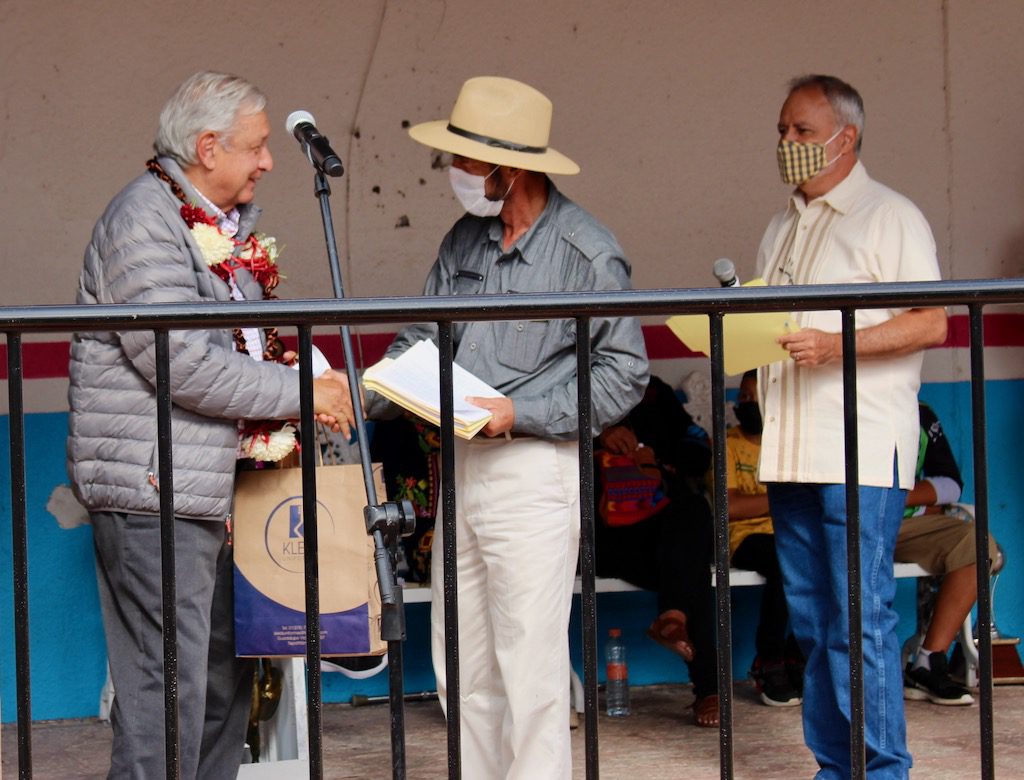
Finally Gabriel Espinoza, the former priest who left the priesthood to defend his village, took his turn at the mic. He handed the president a formal request on behalf of the committee for the government to conduct a financial and technical audit of the more than $600 million USD of public monies that have been poured into the dam, and for those responsible for the waste and corruption to be held to account.
Espinoza has launched his own movement with fellow Save Temaca committee members, calling for an equitable and ecological distribution of water resources, or a “Water Revolution.” The committee, together with experts in sustainable water management, has met with a government working group over the past two years to create a series of alternatives to the dam that could provide for the needs of Guadalajara – such as identifying and repairing the leaks in the city’s deteriorating pipe system, through which an estimated 40 percent of the city’s water supply is escaping.
“You know the whole Republic well, Mr. President. What is happening with the big cities, growing and growing without end? There’s no water. We have to go back to the countryside,” he said. “We must support the food sovereignty of this country and this is not going to be built in the big cities. That must be built in the countryside — and that is why it is important to balance the water issue… Mr. President, spend on infrastructure and spend to clean the water. Or better, not contaminate it. You have to start with a new water culture.”
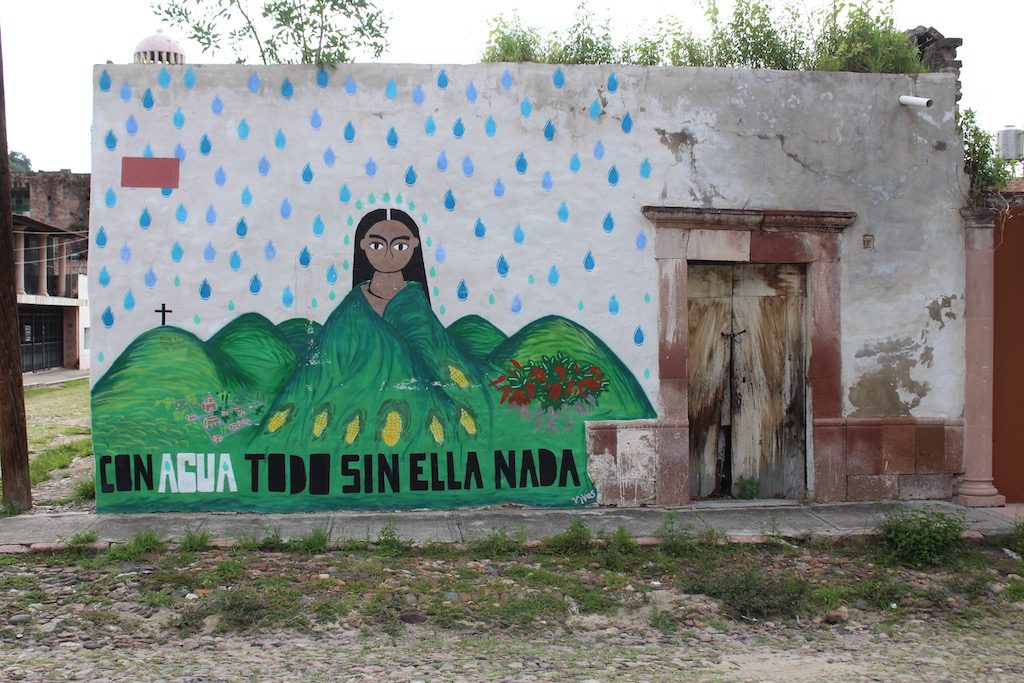
The president’s motorcade departed the city in another flurry of outstretched hands, headed for the dam site and the municipal capital of Yahualica, where he met with Alfaro and reiterated his position. After his departure, villagers celebrated the partial victory, though privately, some expressed their disappointment in the president for not canceling the dam as he had promised.
“I told him, ‘Remember that when you came before, you said that you would put 10,000 soldiers and that company would not continue,’” declared Consuelo Carbajal, Lola and Pachita’s cousin, who runs a tiendita in front of the plaza. “Because when (then environmental secretary Victor) Toledo came, he said that that dam was an aberration.”

Espinoza, too, was disappointed, but realistic. He acknowledged the tremendous pressure on the president due to the money spent and water crisis occurring in Guadalajara. Over the short term, he said, maybe the best they can hope for is that the three villages be saved – along with their agricultural lands, which are essential to their food security.
But over the long term, emphasized, Obrador’s touted Fourth Transformation must include a balance between city and countryside, and a movement from the rapidly growing and unsustainable megacities back to the land. And megadams like El Zapotillo must become a thing of the past – not only because of their threats to biodiversity, but also to climate change, due to the massive amounts of methane released by the flooded and decaying vegetation destroyed by the dam.
“So at the end of the day we are arguing for the planet, not only for three small villages,” said Espinoza, before taking his leave to grab his guitar and sing for the villagers lining up for lunch.
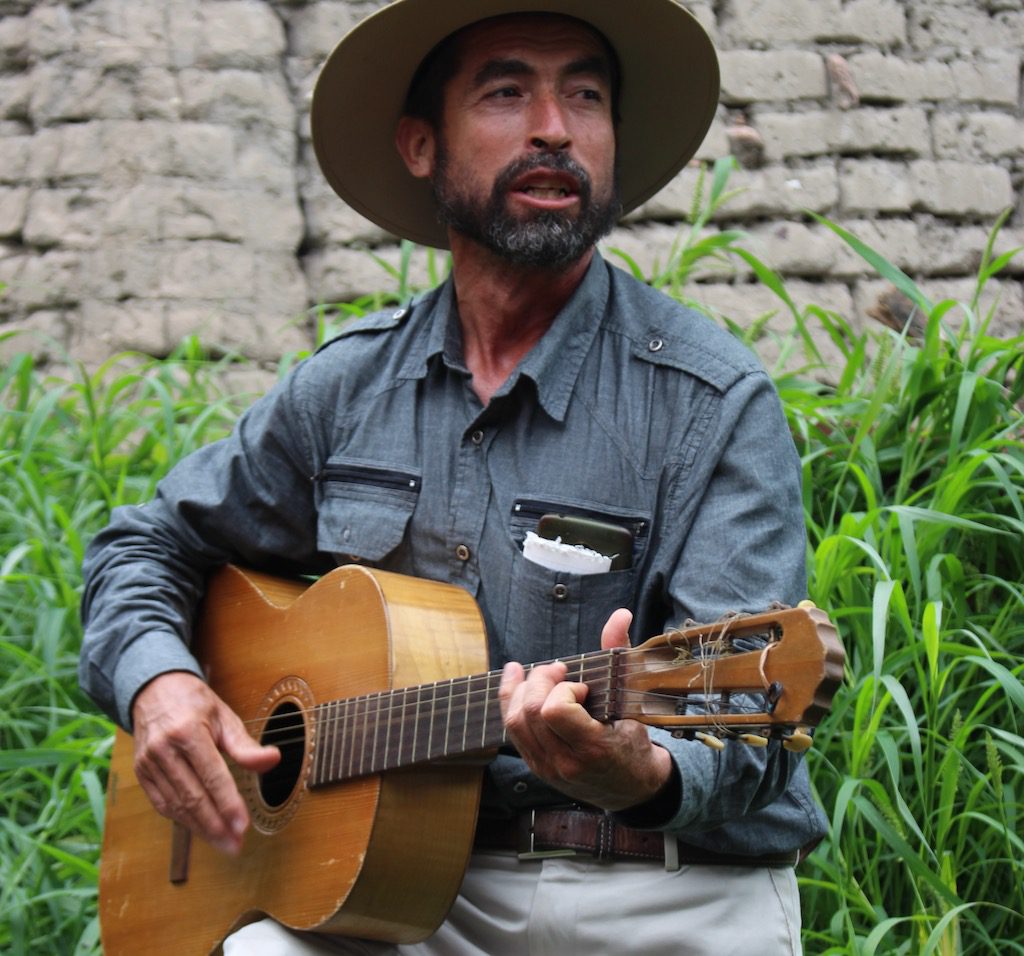
AMLO Andres Manuel Lopez Obrador El Zapotillo integrated water resources management Megadams Temaca Temacapulin